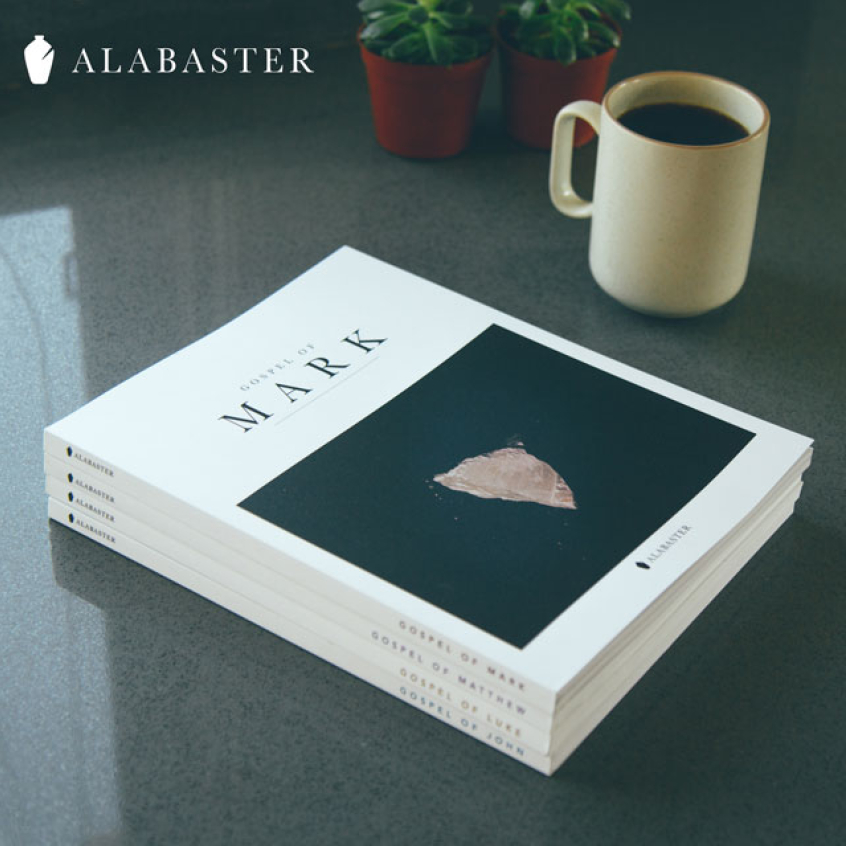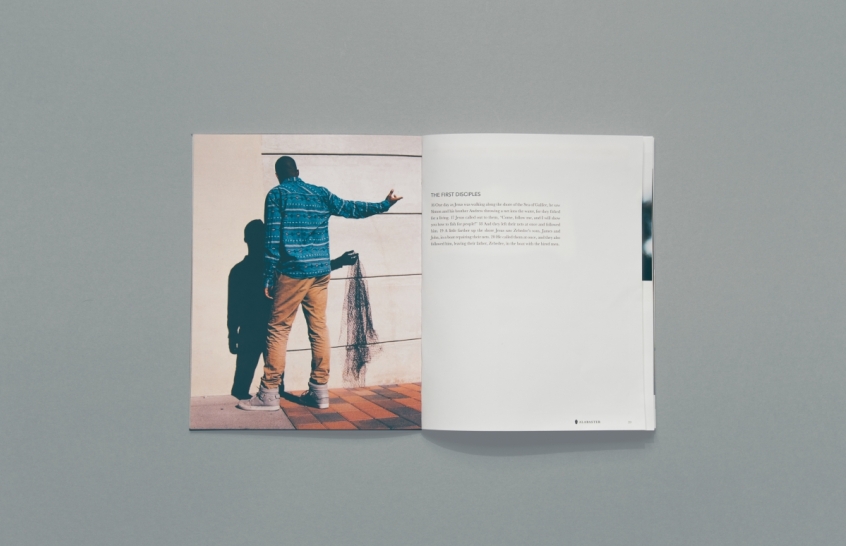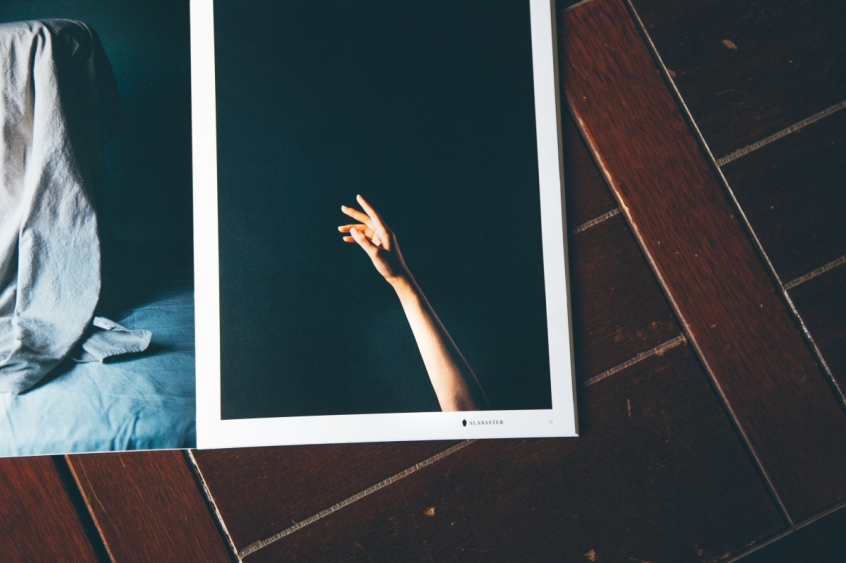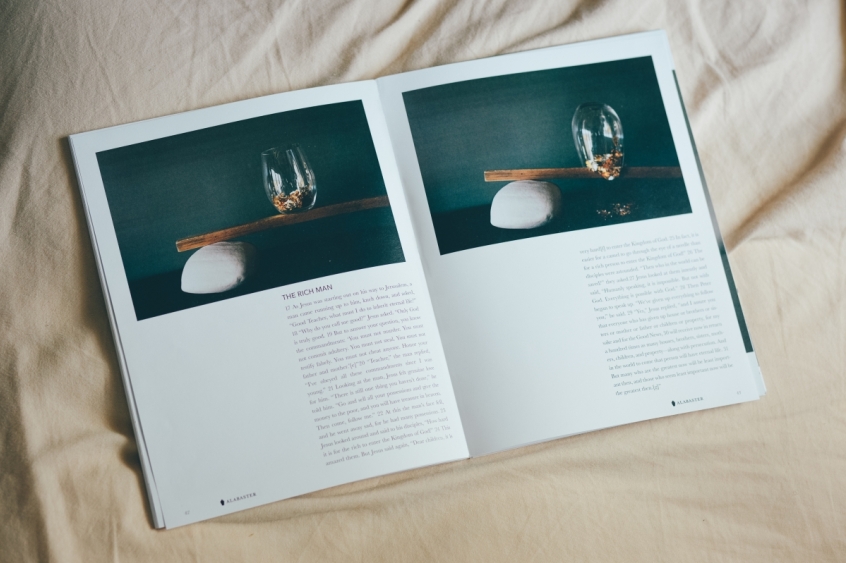
Imagine if Jesus had possessed a camera and had been able to post pictures on Instagram.
Two friends have created a new Bible for the digital age, with the emphasis on sensory and visual beauty.
The are calling it the "Bible beautiful" - a Bible that points to the sheer beauty of the Word of God.
Inspired by Renaissance art at a time when society has been transformed by digital technology, it illustrates how Bible design has changed little over the centuries.
It is called the Alabaster Bible, from the story of the alabaster jar in Mark's Gospel when a woman breaks an alabaster jar of expensive perfume onto Jesus' head.
Many people in the room scoff at her and says she has wasted the perfjme. But Jesus defends the woman saying: "Leave her alone, why do you bother her? What she has done is a beautiful thing."
Bryan Chung, a visual artist, and Brian Chung, a graphic designer, who are both passionate Christians, said of the story of the alabaster jar: "It is this complete act of sacrificial giving which Jesus calls beautiful."
They have funded their new Bible on Kickstarter, where 701 backers have pledged $62,755.
In an interview with Christian Today, Bryan said: "In university I had an identity crisis. By day, I was a Christian, heavily involved in a campus ministry, leading Bible studies, singing worship, and talking to people about Jesus. But, by night I was one of those art majors who would stay up late working on project after project."
These two identities, a Christian and an artist, felt completely separate in his first three years of university.
"People in my campus ministry would be perplexed when I told them I studied art and it felt like God was silent in my calling to be an artist. But I realised many of the ways in which I experienced God was through something entirely visual, which went beyond words, whether it was the beauty of the night sky or the complexity and abstractness of a painting. By my senior year, I felt God saying my passion for art and faith didn't need to be separate, but in fact were meant to be together. It was simply how He created me."

His friend Brian added: "I came to faith in college, and when I got my first Bible I was excited but also intimidated. I didn't know where to start, and I was confused on how to approach the Bible's encyclopedic nature. Studying design in college, I realized that good design could make a reading experience more enjoyable and approachable.
"One night, Bryan and I were having a conversation about beauty and faith. We knew these two topics were important, but wanted to find ways where they could intersect. We tossed around many ideas, and this idea about Alabaster stuck. What if we used thoughtful design and imagery to make the Bible beautiful and more approachable? Could this be used to cultivate a conversation between beauty and God?"
Bryan took up the story: "Our culture has become incredibly visual. Everyone now has access to a camera and digital media is available at our fingertips. We curate everything and share our everyday moments with the click of a button. We've become a society that cares about beauty and is visually engaged.
"When we look at Bible design it has remained the same. There have been few attempts to integrate imagery, typography, and layout design with the biblical text to engage with our rapidly growing visual culture - so we wanted to do so. Similar to old master Renaissance artists, who looked at the Scriptures and created beautiful pieces of art from them, we desired to do the same and wanted to explore what that would look like in our modern culture."

They wanted the Alabaster Bible to be a visual and sensory experience as well as an intellectual one which is why, when most Bibles print on thin paper, they are using thick paper.
The book is also informed by their years of bringing people to faith in Jesus through college ministry in Los Angeles.
Brian said: "Together, we have a decade worth of ministry experience in teaching the scriptures. We started our process with an in-depth, inductive study of the gospels, looking over key themes, repetition and contrast, chiastic structure, cultural commentary, and scholarly commentary before diving into the creative process. We then let the scripture inspire us, as we prayed and thought about what images we wanted to make. We did a mock 96-page layout to see how everything would fit, and then started making the images and design of each page."
He said that Jesus often used imagery to illustrate his parables.
"We'd like to think that if the gospel writers had the technology we do today, they might have considered using imagery weaved into the text to emphasize and illuminate points in the Scriptures."
Bryan cited the theologian Hans Urs von Balthasar and his work, The Glory of the Lord, which describes how beauty, goodness and truth paint a full picture of God. He said: "We saw a need to show a part of that beauty and the biblical text felt like the best place to start."
He added: "Since launching Alabaster I've had friends who are not Christian share about the project. Friends of mine who are Christian and have shared the project have gotten into spiritual conversations with others who saw it. I believe this is because beauty has power, and it has the potential to bring us together as a humanity, regardless of where we're at in our walks with God."














